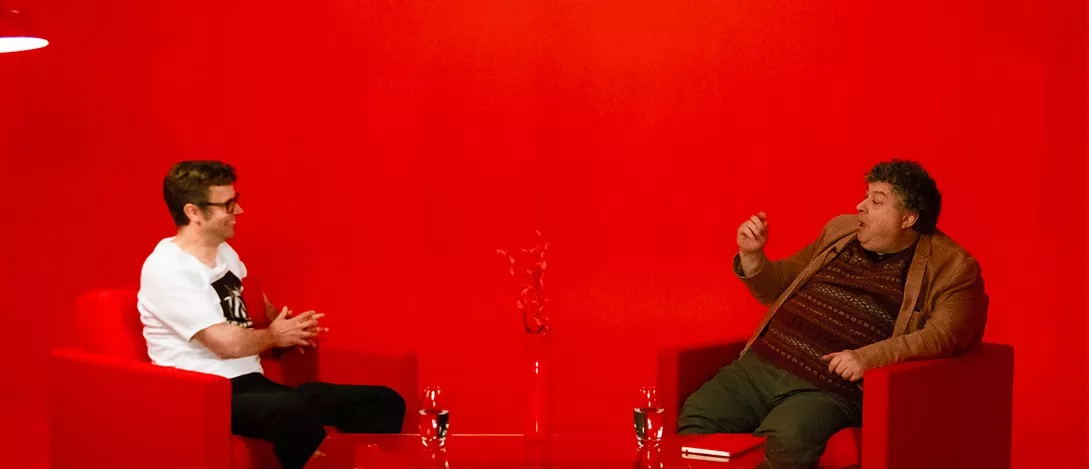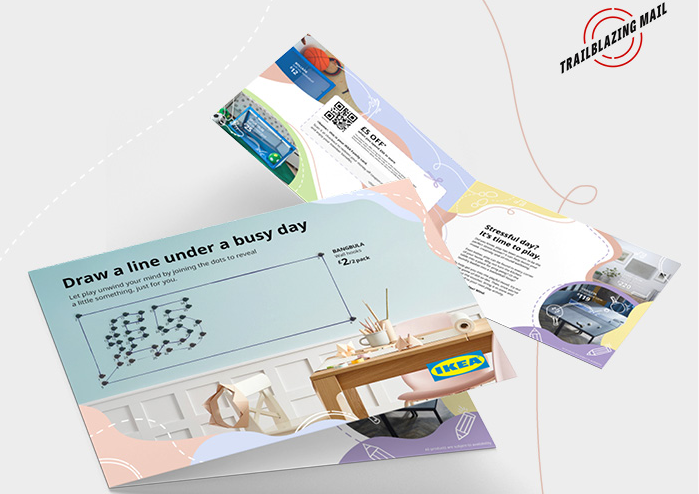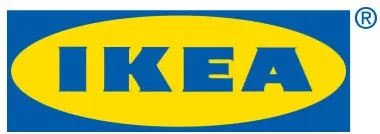Boost your brand's memorability with behavioural science
In a discussion on Mail Unleashed, Richard Shotton and Rory Sutherland explore how behavioural science can enhance brand memorability. They emphasise the importance of distinctiveness, marketing to moments, costly signaling, concrete language, and tactility in marketing.
Strategy

It's intriguing to realise that, despite our belief in our uniqueness, our responses to certain situations often follow common patterns. Behavioural science has been uncovering these patterns through social experimentation throughout history, and recently behavioural science concepts have taken the spotlight. For marketers, a solid grasp of these concepts is invaluable. By applying insights, we can transform our marketing and resonate more deeply with our audience.
In this episode of Mail Unleashed, Richard Shotton, bestselling author of The Choice Factory, had an insightful conversation with advertising guru and Ogilvy Vice Chairman, Rory Sutherland about leveraging behavioural science insight to improve marketing. If you haven't watched it yet and you're looking to make your marketing more memorable, it's a must-see! It’s packed full of gems of wisdom, so check it out now.
The discussion piqued my interest enough to explore some of these concepts further – I’ve unpacked some of the background and research behind these theories. Hopefully these insights are ones that you can apply to your marketing to boost memorability and performance for your brand.
Here they are
1. Be distinctive and surprising
2. Market to moments, not just demographics
3. Embrace the power of costly signalling
4. Use concrete language
5. The advantages of tactility
1. Be distinctive and/or surprising to help your brand be more memorable
In a study from 1933, German psychologist Hedwig von Restorf gave participants long lists of information, then followed by asking what they remembered. She found participants were far more likely to recall the pieces of information that were different from the rest. For example, if you gave people a long list of vehicles (train, bus) and added in a few animals (cat, dog) it’s the animals they’d remember. When we apply this to marketing, what does it mean? Find a way to zig when everybody else zags, go against the flow, break away from the pack – however you want to phrase it, just aim to be memorable and do something different.
Why lean on surprise to capture the attention of your audience?
The ‘Santos’ study Richard refers to in the episode goes back 30 years - it’s from 1994. The research was conducted by Michael Santos, Craig Leve and Anthony Pratkanis at the University of California.
In the experiment, the researchers asked three confederates to pose as beggars, asking passers-by for money. When the confederate asked unsurprising requests – like “can you spare any change?” or “can you spare a quarter?”, on average 23% of people did so.
However, when the ‘beggar’ made a surprisingly precise request – “can you spare 17 cents?” or “can you spare 37 cents?” – then responses increased, and 37% of people were happy to help. The psychologist explained this finding by arguing that people made their lives easier by using what they called ‘scripts’. The psychologists meant that when people encountered regular situations, rather than evaluate them on their merits, they just deployed a prefabricated reaction. In most cases, many people have an automatic script - just say no.
The script is only activated when there’s a standard request. If the ‘beggar‘ asks for a surprising amount, the passer-by has no premeditated response, and they have to at least evaluate the request on its own merits. That gives the beggar an opportunity to persuade. This is has been referred to as The Pique Technique - a target is more likely to comply if mindless refusal is disrupted by a strange or unusual request.
Richard Shotton encourages viewers to “take the route least expected by customers” to drive more response than taking a predicted route.
In the world of charitable donation, Crisis doesn’t just ask for £20 or £30 at Christmas, they ask for a specific donation like £20.41, for example.
The takeout:
Aim to be distinctive or surprising to get noticed and remembered. Identify the formulaic rules of behaviour in your category and be brave enough to go against the grain. Find a way to zig when everybody else zags. Often what we consider as memorable is what’s most surprising, or what we may least expect.
Also, consider your media selection - if your competitors are advertising through social media, then how can you stand out? There is relatively little competition on the doorstep, so direct mail can absolutely provide that surprise factor, especially for a Gen Z audience who may not get a lot of addressed mail.
HSBC used this concept in one of their campaigns targeting new university students. They partnered with UCAS to send out two mailers: one sent before exams to wish students good luck, and the second for those who received a place at university, congratulating them on their place and gifting them an Amazon voucher. The campaign performed exceptionally, boasting the highest new-to-bank customer acquisition in nine years. Take a look at the case study here:
2. The power of marketing to moments, not just demographics
Marketers often default to targeting groups of people based on demographic or attitude when targeting can be a lot more nuanced than that. Richard wrote an article on Marketing Week titled Your customers aren’t constant, it’s moments that matter more. The article discusses social psychology around the fundamental attribution error. That is, the tendency of people to over-emphasise personal characteristics like being ‘kind’ and ignore situational factors in judging others’ behaviour.
It's important for us to remember that a decision a person makes one time isn’t always repeated – it’s dependent on external influences like context, mood, and location. People tend to overemphasise another’s personality, like how kind they may be, and underplay the importance of external factors. These, Richard suggests, are the better opportunities for brands to target. Is your prospect in a hurry? Happy? Stressed? Or are they calm and relaxed?
Consider what external factors are impacting your audience when consuming branded messages
The example Richard gives in the article is giving money to a homeless person - one day you may, the next you may not – it’s not because you’re an unkind person, it could have more to do with being in a hurry, stressed, or generally in a bad mood.
Back in 1973, there was a study called The Good Samaritan Experiment by Princeton psychologists. They recruited 40 students and gauged their personalities by asking them why they were studying to be priests – for personal salvation or to serve others.
The experiment came into play where some students were told to hurry, as they were already running late, and another group weren’t.
Outside, somebody posed as a person in need of help, slumped on the ground, and acting as though they were struggling to breathe. All students had to pass this person to go to the next location.
Results were astonishing – only 10% of trainee priests stopped to help when in a hurry, compared to a majority (63%) who helped when they had time on their hands.
What’s the significance of mood in marketing?
Mood has been shown to significantly shape decision making – happy, calm people are generally more attentive and receptive to marketing messages.
In 2007, University of Amsterdam’s Fred Bronner asked 1,287 participants to look through a newspaper. Afterwards, he questioned them as to which ads they remembered – he also asked about their mood and stress levels.
Results from this research showed that those feeling positive and happy recalled 52% of the ads compared to unhappy readers, recalling just 35%.
A brilliant example of this in the context of marketing is Octopus Energy’s Octopus Jam. Octopus Energy realised that people hate to be kept on hold – not only that people don’t like being on hold. The fact that being kept on hold can be frustrating, and starting a conversation already frustrated isn’t conducive to a positive conversation. They explored how to elevate a callers’ mood if they had to be kept on hold prior to starting a conversation.
The result was that they introduced Octopus Jam. So, if you put in your date of birth when you call you’ll listen to the song that was the biggest hit at one of the happiest times of your life – when you were 14. This helped make people happier and more attentive and receptive to their phone call.
The takeout:
Many of us understand demographic targeting but don’t necessarily think of marketing to specific moments of their audience. Think about how to reach your audience when they’re feeling happiest or most relaxed as they’re more likely to be receptive to a message at those times. If there are pain points in the customer journey, then how can you alleviate some of these to improve mood?
When looking at media selection, think about the context and location of where your messages are received may appear. Direct Mail can work wonders here. Mail has the unique ability to reach people where they are happiest and most relaxed – in the home. This audience can also open your message at a time that suits them.
IKEA leveraged this idea nicely with their Play campaign. IKEA drove footfall to store by providing a fun dot-to-dot in a mailer that uncovered a £5 voucher they could take into store to redeem. You can see how this nod to childhood nostalgia in a relaxed environment can help elevate a recipient’s mood.

3. Embrace the power of costly signalling
What is costly signalling theory (CST)?
Amotz Zahavi, an evolutionary biologist at Tel Aviv University, was at the forefront of CST in 1975. A biological example of costly signalling is the male Bower bird, who goes to heroic attempts at building the perfect nest for a potential mate – spending thousands of hours, years in fact, building this masterpiece of a nest. Why do they go to such a great effort to attract a mate? The answer is simple, they want potential mates to think ‘pick me. I’m attractive. I’m clever. I’m fit. Look at what I can do for you!’
How come? The many hours spent building a nest displays fitness and focus. This, in essence, is what costly signalling is all about, at least when it comes to biology.
How does the idea of costly signalling relate to advertising?
Costly signalling within advertising is the idea that the more a brand spends communicating a message, the higher the value the brand or product in question. People seem to inherently understand that the more time and effort that goes into a message conveys a message of quality. An example of this in our everyday life, as Rory Sutherland highlighted, we invite guests to a wedding with a beautiful invitation, generally sent by post – not a group email.
This also occurs in advertising. John Kay, an economist at Oxford University, suggests that advertising works not because of the messages themselves, but because it's a costly signal. Advertising known to be expensive signals the volume of the resources available to the advertiser. As Kay says in his paper:
"The advertiser has either persuaded lots or people to buy his product already, a good sign, or has persuaded someone to lend him lots of money to finance the campaign".
Richard Shotton has written a couple of articles on costly signalling, and it’s one of his main discussion points with Rory.
He states, “There's a perception that it has taken time or money to send a piece of direct mail. In the way there isn’t that perception for an email. And one of the big ideas in behavioural science is this idea of costly signalling. The greater effort a communicator has gone to, the more believable their message” – Richard Shotton.
In the episode, Richard and Rory discuss a campaign created by Ogilvy for Christian Aid that appears in Rory Sutherland’s book Alchemy. In 2018, Christian Aid sent out 200,000 envelopes and randomly tested six different interventions. The most successful idea harnessed costly signalling and its success had nothing to do with messaging.
In one of the tests, they used thicker paper stock for the mailer and envelope. When more expensive-feeling paper was used, donations went up 16% versus control. This cue of premium-ness increased people’s perception of what a reasonable amount to spend was.
The takeout:
Consider the medium of your message as well as the message itself. Direct mail is a perfect demonstration to your audience that you value them because you’re going to the effort to send it.
something printed and personalised, addressed to them. There’s a common perception that it has taken time or money to send a piece of direct mail that doesn’t exist for email or other forms of digital advertising.
4. Use concrete language in your branded communications
Marketers often lean towards using abstract language because we tend to try to be creative and feel this sort of language may impress readers more. Research shows that this isn’t often the case and marketers should strive for simple, concrete language to boost memorability. Concrete language is easier to visualise and therefore four times more likely to be remembered than abstract benefits that brands often highlight.
Richard mentioned research conducted by Ian Begg, from the University of Western Ontario, the first psychologist to study the impact of using concrete language. In 1972, he created a simple experiment that started with him reading out 20 two-word phrases to listeners. Some phrases were concrete, like ‘square door’ or ‘muscular gentleman’, whereas others were abstract, like ‘basic truth’ or ‘subtle fact’.
Begg then asked people to recall as much as they possibly can. And he found that people remember, on average, 9% of the abstract phrasing and 36% of the concrete phrasing. So there is a massive change in memorability based on something being concrete rather than abstract. He believes that vision is the most powerful of our senses and suggests it’s because when we hear a concrete phrase, we subconsciously visualise it. In contrast, abstract words don’t generate a mental picture and therefore aren’t as memorable.
The takeout:
Concrete language is easier to visualise and four times more likely to be remembered than abstract benefits that brands often highlight in their communications.
For example, easy to visualise language like ‘muscular gentleman’ and ‘square door’ is more memorable than more abstract and difficult to visualise phrases like ‘subtle truth’. Brands generally use abstract language to convey their brand and product benefits, whereas simple concrete language people find much more memorable. “Use language that you can visualise… That will be much, much stickier than language that is abstract.” – Richard Shotton
5. The advantages of tactility
Physical location cues can boost memorability and remembering text from within a piece of print is a perfect example.
The social study behind this theory is from just over a decade ago. In 2013 Anne Mangen of the University of Stavanger asked students to read two texts, each about 1,500 words. Half the students read the texts on paper and the other half read them on a computer. Afterwards, Mangen gave the students reading comprehension tests consisting of multiple-choice questions. Her main finding was that those who read the texts from a screen performed worse than those who read on paper.
Richard suggests a convincing reason this may occur is the fact a physical location boosts memorability. Meaning when we recall information, we often remember where we saw it much better than that on a screen. In the case of a book, we could remember a sentence appearing top left of a page, in the middle of the book. This physical location is harder to recall with a digital device, like kindle because location is distorted due to changing variables like size of text, scroll depth, device screen size and other factors.
The takeout:
It’s proven people tend to remember printed text over text read on a screen. The reason why print is more memorable has been debated, a common theory is people can remember location of text on a page. For example, top left of a page, or a quote at the bottom of the page toward the end of the book. Print is easier to remember in this sense compared to a screen because screens have so many variable details like text size and screen size and scroll depth, which means the location of text is harder to pinpoint. So, as Richard says, "If you want something to remembered, then print it."
It's brilliant to unpack this conversation as there are so many useful gems within the content. By having a deeper understanding of these behavioural science concepts and insight we can create marketing that truly resonates with our audience.
If you missed the episode, catch up here https://www.marketreach.co.uk/mail-unleashed/richard-shotton-the-choice-factory.
About the author:
Alana Badcoe is a marketing specialist and leapt over to the UK from across the pond, Australia. She has an insatiable curiosity and graduate degree in marketing and has worked in the industry for various sectors over 15 years.
Further reading
https://www.marketreach.co.uk/mail-unleashed/richard-shotton-the-choice-factory
https://www.marketingweek.com/richard-shotton-power-costly-signalling/
https://www.warc.com/newsandopinion/opinion/how-costly-signaling-makes-ads-more-effective/en-gb/2234
https://www.marketingweek.com/boundary-breaking-ads-win-through/
https://www.marketingweek.com/customers-constant-moments-matter-more/
https://www.marketingweek.com/strong-memories-concrete-language/
https://www.marketreach.co.uk/blog/four-ways-to-use-behavioural-science-to-make-mail-more-effective
https://academy4sc.org/video/the-good-samaritan-experiment-why-do-people-help-each-other/




